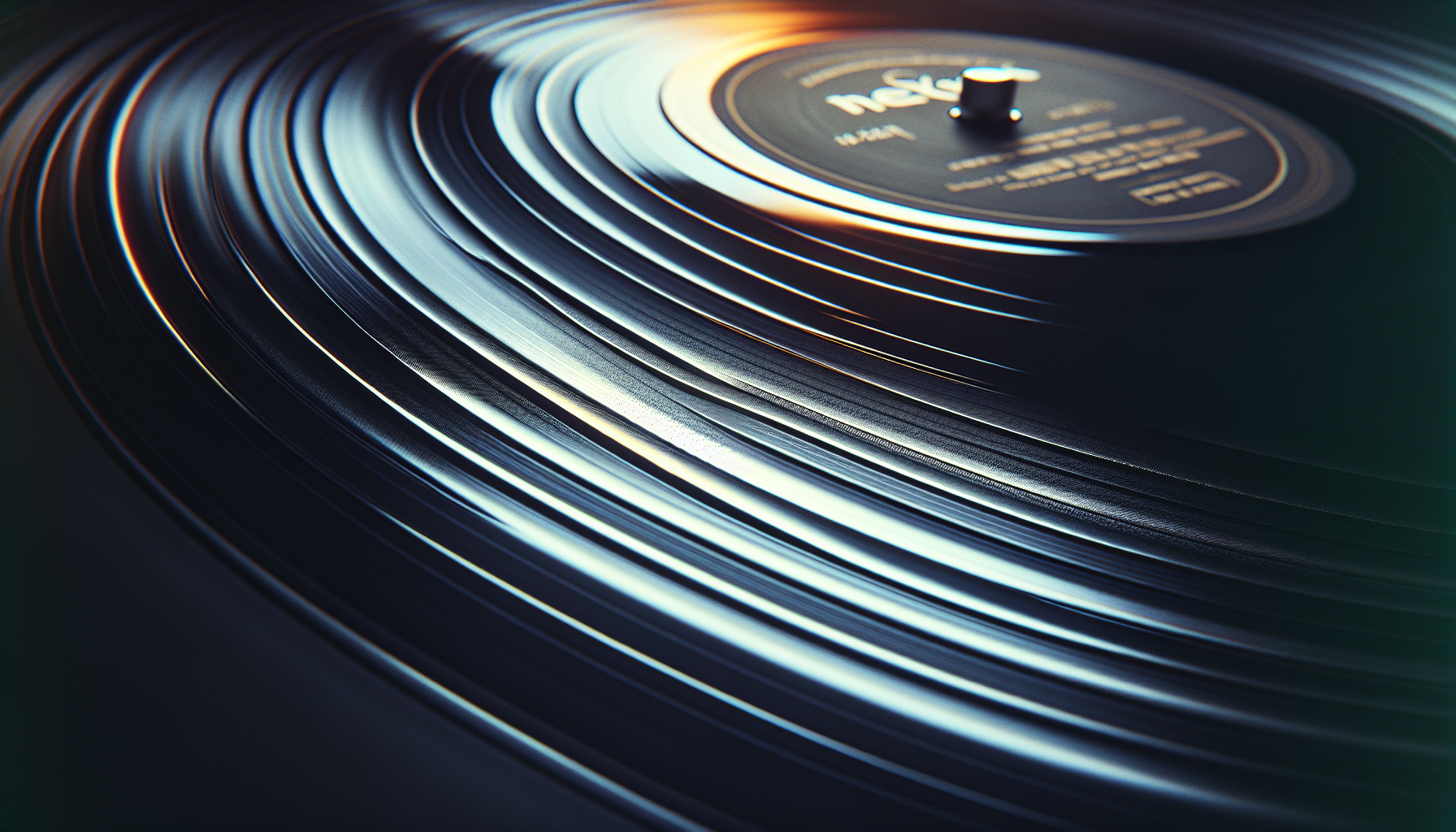Do you ever wonder how long your beloved vinyl records should last? In a world where technology is constantly advancing and formats come and go, vinyl records have stood the test of time. Their warm analog sound and distinct crackling have made them a staple in many music lovers’ collections. But, just like any physical medium, vinyl records aren’t immune to deterioration. So, how long can you expect your vinyl records to last? Let’s explore the factors that affect their longevity and find out how you can prolong their lifespan.
General overview of vinyl records
Definition and composition of vinyl records
Vinyl records, also known as phonograph records or simply records, are a type of analog audio storage medium. They are typically made of polyvinyl chloride (PVC), a durable, flexible plastic material. Vinyl records consist of concentric grooves that encode audio information, which is played back by a turntable and a stylus.
Historical significance of vinyl records
Vinyl records have a rich history, dating back to the late 19th century when Thomas Edison invented the phonograph. They quickly became the dominant medium for music reproduction, revolutionizing the music industry. Vinyl records saw their peak popularity in the mid-20th century, but with the advent of digital formats like CDs and mp3s, their popularity declined.
Resurgence of vinyl records in recent years
In recent years, vinyl records have experienced a significant resurgence in popularity. This resurgence can be attributed to a combination of factors, including nostalgia, a desire for physical media, and the unique sound quality and tactile experience that vinyl records offer. Many music enthusiasts appreciate the warm, rich sound that vinyl delivers, as well as the large album artwork and the act of carefully selecting and playing a record.
Factors influencing the lifespan of vinyl records
Record manufacturing quality
The quality of the vinyl record itself plays a crucial role in determining its lifespan. Factors such as the vinyl formulation and pressing techniques used during manufacturing can impact the longevity of a record. Higher-quality pressings tend to have better sound reproduction and are more resistant to wear and tear.
Storage and handling conditions
How a vinyl record is stored and handled greatly affects its lifespan. Proper storage techniques, such as storing records upright and avoiding excessive stacking, can prevent warping and damage. Protection from heat, humidity, and sunlight is essential to prevent warping and discoloration. Additionally, excessive handling, especially improper gripping or touching the playing surface, can lead to scratches and degradation.
Environmental factors
The environment in which vinyl records are stored and played also impacts their lifespan. Temperature and humidity fluctuations can lead to warping, mold growth, and various other forms of damage. Pollutants and contaminants in the air can settle onto the record’s surface, affecting playback quality. Over time, these environmental factors can subtly degrade the condition of the record.
Playback equipment maintenance
Regular maintenance of playback equipment, such as turntables, is paramount to preserving the lifespan of vinyl records. Proper upkeep and calibration of the turntable ensure accurate tracking and reduce unnecessary wear on the record. Keeping the stylus clean and properly aligned minimizes the risk of damaging the grooves. Excessive tracking force should be avoided, as it can cause excessive wear and distortion. It is also essential to practice proper record cleaning methods to remove dust and debris that can negatively impact playback.
Expected lifespan of vinyl records
Variability in lifespan
The lifespan of a vinyl record can vary significantly depending on various factors, including its manufacturing quality, storage conditions, and usage frequency. While some records can last for decades or even centuries if well cared for, others may show signs of wear after just a few years. It is essential to understand that there is no universal lifespan for all vinyl records, and individual records can have significantly different longevity.
Determining factors affecting longevity
Several factors come into play when determining the lifespan of a vinyl record. The care and usage it receives, stability of the storage environment, quality of materials used during manufacturing, and exposure to external influences and accidents all contribute to its overall longevity. By understanding these factors and taking necessary precautions, record owners can enhance the lifespan of their vinyl collection.
Estimating the average lifespan
Estimating the average lifespan of a vinyl record is a challenging task due to various factors at play. While studies and research have been conducted on record longevity, they often produce inconclusive data due to the wide range of conditions under which records are stored and used. Expert opinions and anecdotal evidence can provide some insights, but caution should be exercised when interpreting these estimates. Factors such as record quality, storage conditions, and usage patterns should be carefully considered when attempting to estimate a record’s lifespan.
Record manufacturing quality
Different vinyl formulations
Vinyl records can be manufactured using different formulations of polyvinyl chloride. The quality and durability of these formulations can vary, with some being more resistant to wear and degradation than others. Higher-quality vinyl formulations are often sought after by audiophiles for their superior sound reproduction and durability.
Impact of pressing techniques
The pressing techniques used during record manufacturing can significantly affect the final product’s quality and lifespan. Records that undergo precise and well-controlled pressing techniques tend to have smoother grooves and more accurate sound reproduction. On the other hand, records pressed using lower-quality techniques may have inconsistencies and defects that can impact their longevity and playback quality.
Potential for defects
During the manufacturing process, vinyl records are susceptible to various defects that can impact their lifespan. These defects can range from minor surface blemishes to more severe issues like off-center pressing, warping, or uneven grooves. Identifying and avoiding records with significant defects is crucial to ensure a longer lifespan and optimal sound quality.
Identifying high-quality pressings
Identifying high-quality pressings requires a careful evaluation of various factors. Visually inspecting a record for defects, warping, or surface imperfections is a good starting point. Additionally, researching reputable record labels or specific pressing plants known for their quality control can increase the likelihood of obtaining a high-quality pressing. Audiophile forums, trusted online retailers, and record fairs are excellent resources for gathering information about specific pressings and their overall quality.
Storage and handling conditions
Proper storage techniques
Proper storage techniques are vital for maintaining the longevity of vinyl records. Storing records upright, in an area that is free from excessive humidity and temperature fluctuations, helps prevent warping. Records should be stored in protective sleeves that are acid-free and free of contaminants. Sturdy record storage furniture or shelving designed specifically for vinyl records can help minimize the risk of damage from stacking or mishandling.
Protection from heat, humidity, and sunlight
Vinyl records are sensitive to extreme temperatures and high humidity levels. Exposure to excessive heat can cause warping, while high humidity can lead to mold growth and degrade the record’s condition. Sunlight should also be avoided, as it can cause discoloration and damage the album covers. Storing records in a cool, dry, and shaded area is essential for long-term preservation.
Avoidance of excessive handling
Excessive handling should be minimized to reduce the risk of scratches and damage to vinyl records. Touching the playing surface of a record with bare hands should be avoided, as oils and debris from fingertips can affect playback quality and cause permanent damage. When handling records, it is best to hold them by the edges or with a dedicated vinyl record handling tool to minimize the risk of mishaps.
Cleaning and maintenance practices
Regular cleaning and maintenance are crucial for ensuring the longevity of vinyl records. Dirt, dust, and debris can accumulate on the record’s surface, impacting playback quality and potentially causing damage over time. Proper record cleaning methods, such as using anti-static brushes or record cleaning machines, can effectively remove contaminants without scratching the grooves. It is important to follow recommended cleaning practices and avoid abrasive materials or cleaning solutions that can harm the vinyl.
Environmental factors
Temperature and humidity effects
Vinyl records are susceptible to changes in temperature and humidity, which can have adverse effects on their condition. Frequent and extreme fluctuations in temperature can lead to warping, while high humidity levels can promote mold growth and damage the record’s surface. Storing records in a stable environment, preferably with a consistent temperature range of 65-70°F (18-21°C) and humidity level around 50%, helps mitigate these risks and preserve their lifespan.
Influence of pollutants and contaminants
The presence of pollutants and contaminants in the environment can have a negative impact on vinyl records. Airborne particles, such as dust, smoke, and chemicals, can settle onto the record’s surface and make their way into the grooves. Over time, this can lead to increased surface noise and affect playback quality. Keeping the storage environment clean and dust-free, using air purifiers if necessary, and avoiding smoking near the record collection can help minimize exposure to these harmful substances.
Subtle yet impactful decay over time
Vinyl records are subject to a form of decay, known as “vinyl degradation,” which occurs over time. This gradual decay can result in a loss of high-frequency details and increased background noise. While the exact causes of vinyl degradation are not fully understood, environmental factors, heat cycling, and physical aging of the vinyl are believed to contribute to its occurrence. Although the decay may be subtle, it can accumulate over time and affect the overall audio fidelity of the record.
Mitigating environmental risks
To mitigate environmental risks, it is important to store vinyl records in a controlled environment that minimizes exposure to temperature fluctuations, humidity, and pollutants. Investing in a dehumidifier or humidifier, depending on the specific needs of the storage area, can help maintain stable humidity levels. Additionally, using protective record sleeves and keeping records stored upright and away from potential sources of contamination can further safeguard them from environmental risks.
Playback equipment maintenance
Turntable upkeep and calibration
Proper maintenance of the turntable is crucial for preserving the lifespan of vinyl records. Regularly cleaning and lubricating the turntable’s components, such as the platter and tonearm, ensures smooth operation and reduces the risk of damaging records. Additionally, periodic calibration of the turntable’s tracking force, anti-skate, and cartridge alignment helps maintain accurate tracking and prolongs stylus and record life.
Importance of clean stylus and alignment
Keeping the stylus clean is essential for optimal playback performance and record longevity. A dirty stylus can accumulate dust, debris, and residue from previous plays, which not only affects sound quality but also poses a risk of damaging the delicate grooves. Regular cleaning with a stylus brush or specialized cleaning solutions helps remove contaminants and maintains clear audio reproduction. Proper alignment of the stylus to the record grooves minimizes excessive wear and ensures accurate tracking.
Avoidance of excessive tracking force
Excessive tracking force, the downward pressure exerted by the stylus on the record, can accelerate wear on both the stylus and the record. It is important to set the tracking force to the manufacturer’s recommended specifications for the specific cartridge and stylus being used. Too much tracking force can cause distortion and groove damage, while insufficient force can result in tracking errors and compromised sound quality. Following the manufacturer’s guidelines and periodically checking and adjusting the tracking force helps prolong the lifespan of both the record and stylus.
Proper record cleaning methods
Regularly cleaning vinyl records is crucial for maintaining optimal playback quality and extending their lifespan. Using a carbon fiber brush or an anti-static brush before every play helps remove loose dust and debris. For more thorough cleaning, specially formulated record cleaning solutions and microfiber record cleaning cloths can safely remove stubborn contaminants without damaging the vinyl. It is important to follow the recommended cleaning techniques, such as brushing in the direction of the grooves, to avoid introducing scratches or surface damage.

